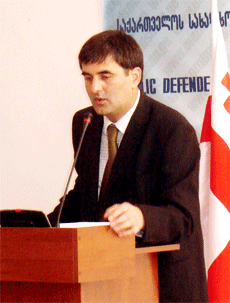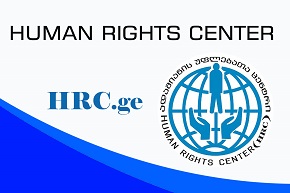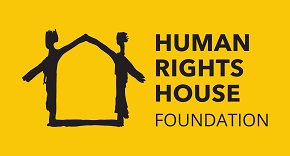 The Public Defender has requested Zurab Adeishvili, the Prosecutor General of Georgia to launch a preliminary investigation into the excessive use of force on November 7 and illegal activities of policemen. There was no legal necessity to use rubber bullets to disperse the people in front of the parliament, in Rike and in the area surrounding TV Company “Imedi”.
The Public Defender has requested Zurab Adeishvili, the Prosecutor General of Georgia to launch a preliminary investigation into the excessive use of force on November 7 and illegal activities of policemen. There was no legal necessity to use rubber bullets to disperse the people in front of the parliament, in Rike and in the area surrounding TV Company “Imedi”.
Article 12 of the Law on Police contains an exhaustive list of measures that can be used by law enforcement in such circumstances. Rubber truncheons, tear gas and a water cannon are mentioned in the article but rubber bullets are not referred to at all. The above-mentioned regulation has an authoritative character and applying special measures not envisaged by the law constitutes a crime.
Article 10, paragraph 10 of the Law on Police states that “a policeman shall apply physical violence, special tools and fire-guns only in those circumstances covered by the law and the regulations provided for by the law.”
Since article 12 does not foresee the use of rubber bullets we can claim that representatives of the Ministry of Internal Affairs abused their power by using prohibited tools. Consequently not only specific riot policemen should be punished, but all those officials of the Ministry, who acted in breach of Georgian legislation by purchasing rubber bullets and then ordered to use them, should be punished.
We can take examples from leading European countries to highlight the legality of using bullets. The laws of those countries do not prohibit law enforcement officials to use rubber bullets. Sharing the experience of European countries is only in the competence of the Georgian parliament. The legislative body should have defined the possibility of using rubber bullets.
The Ministry of Internal Affairs and military units subordinating the Ministry must comply with the law. It means they must not use any of prohibited measures against people. Particularly in the situation when the force is being used against the people.
The state has a monopoly on using force. The state is allowed to use force in a case of extreme necessity, but permitted to use forcible measures explicitly indicated in the law. The Law on Police does not envisage a possibility of using rubber bullets.
The Public Defender considers the discovery of rubber bullets in the police arsenal is a violation of the law. Consequently, it has no sense to discuss the case the legitimacy, the necessity or proportionality of the use of bullets.
Consequently, using rubber bullets without any justifying circumstances constitutes an abuse of power. - this crime is mentioned in article 333 of the Criminal Code.
According to article 21, paragraph c of the Georgian Organic Law on the Public Defender, the Public Defender sent the materials to the Prosecutor General of Georgia and requested to launch a preliminary investigation.
Representatives of the Public Defender met and interviewed the journalists who were injured by law enforcement officials during the dispersal of the demonstration.
Nino Silagadze, a journalist for the newspaper “Georgian Times” stated that while dispersing the demonstration in Rike, riot policemen aimed rubber bullets at her. One bullet was shot in her neck and another hit her leg.
Lasha Mikadze, a journalist for the news program “Kronika” (Imedi TV) was leaving the TV Company building together with several colleagues in the direction of Lubliana Street where the riot police met them and released tear gas without any warning. Lasha Mikadze ran away, however the rubber bullets reached him and Diana Trapaidze, a pregnant journalist, who was running alongside him.
Levan Javakhishvili and Sofo Mosidze, journalists for the news program “Kronika”, were in the studio when riot policemen rushed into the room. They dragged stylist Natia Karkashadze from the make-up room while beating and scolding her. One of the riot policemen was making insulting remarks and pointed guns at the other people present in the studio. Some time later they led all fifteen people to the ground floor where Levan Javakhishvili saw his colleagues lying on the floor; the policemen were pointing guns at them. One of the riot policemen called the women “Badri’s Harlots”. The policeman pointed the gun at Levan Javakhishvili and called him “Badri’s Cub”. They refused to let Javakhishvili take his car and shot him with rubber bullets in his legs and twice in the back. The riot policemen were following him until Gudushauri Hospital. The journalist did not want to take part in the demonstration; so the only reason for chasing him was to assault him, not to prevent him from joining the protestors.
Amiran Kupatadze, the head of the Foreign Department within TV Company “Imedi” and his colleagues were ordered to lie down on the floor. Twenty minutes later they were demanded to leave the building. however in Lubliana Street riot policemen followed him. Two bullets were shot in the back of Amiran Kupatadze.
Source: Public Defender’s Office



